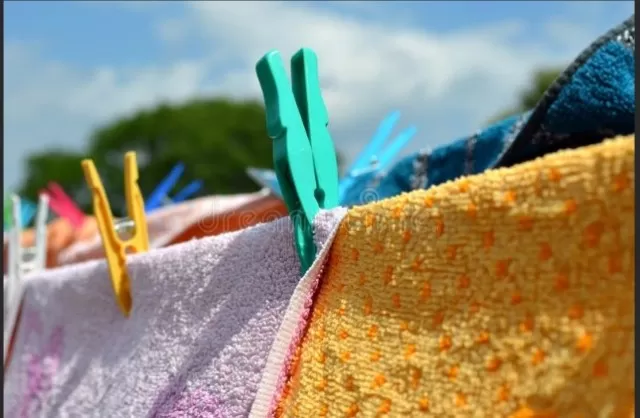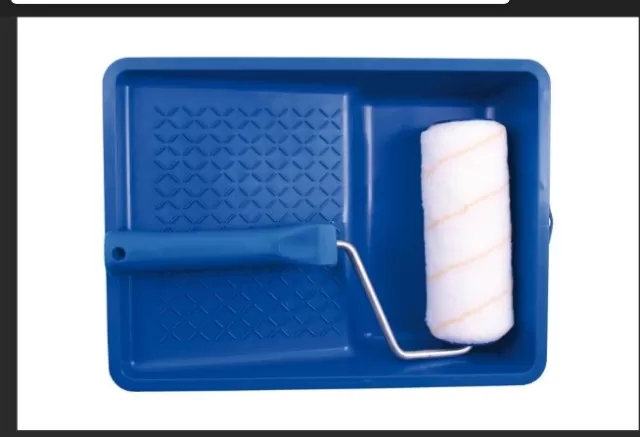Master the Art of Air Drying: Dos and Don’ts for Fresh Laundry. Opting to air dry your garments and bedding instead of using a clothes dryer can lead to significant savings in energy costs. Not only that, but air drying also has the added benefit of extending the lifespan of your fabrics. Here’s why you should consider making the switch:
Maintain a Clean Clothesline and Stay Informed About Pollen and Weather Conditions

Paraphrased text: Ensure your clothesline remains clean by removing dust and bird droppings before hanging freshly washed clothes, linens, and towels.
Avoid leaving clothespins on the line, as they can rust and stain your garments. Instead, conveniently store them in a durable Oxford fabric clothespin bag, such as the one offered by Veamor.
This bag can be easily clipped to your clothesline, belt loop, or drying rack.
Stay vigilant about pollen and weather conditions by regularly checking reports.
If you suffer from allergies triggered by pollen, it’s advisable to refrain from drying your laundry outside on days with high pollen counts. Most weather apps provide this information, but if not, you can visit Pollen.
com and enter your ZIP code for the daily forecast in your area. If the forecast indicates unfavorable conditions, such as high pollen or heavy rain, consider drying your clothes indoors using a foldable rack.
Our recommended choice for a clothes drying rack is the SONGMICS 2-level drying rack, which received top ratings in our comprehensive guide.
Optimize Space and Preserve Garment Shape When Hanging Laundry
To maximize space on your clothesline, follow a specific order when hanging different items.
Begin by hanging sheets, followed by towels, and finish with clothing. This arrangement allows for efficient utilization of the available space. Remember to maintain a gap of at least an inch between each item to ensure proper airflow, which aids in the drying process.
When it comes to air drying clothes indoors, avoid hanging knit sweaters or other heavy garments on a clothesline or indoor rack.
Hanging them can result in stretched shoulders and misshapen sleeves. Instead, lay sweaters, jackets, and heavy knit shirts on a flat, foldable mesh drying rack like the one provided by OXO Good Grips.
Rotate the garments occasionally as they dry to expedite the process and ensure even drying. Heavy fabrics tend to accumulate moisture at their lower portions, so turning them helps prevent this issue.
Enhance Air-Drying Results with Shaking and Indoor Airflow

.
To prevent stiffness and improve the quality of air-dried clothing and linens, give each piece a thorough shake before hanging it on the line or drying rack.
Shaking the fabric right after washing helps to fluff up the fibers, preventing stiffness and reducing the likelihood of garments clinging to themselves. Additionally, ensure that you fully stretch out your clothing to minimize wrinkles during the drying process.
When air-drying clothes indoors, it’s important to create a suitable airflow.
While a gentle breeze outdoors is ideal for moisture removal and proper ventilation, you can achieve similar results indoors. Mimic a breeze by turning on a ceiling fan or using a portable fan in the same room where you’re drying your laundry.
If a fan is not available, open windows to allow for fresh air circulation.
Master the Art of Properly Hanging Laundry and Protect Fabric Colors
Efficiently hanging wet laundry ensures quick drying and minimizes wrinkles.
Follow these guidelines for different types of garments:.
Pants: Align the inner seams and hang them by the hems, not the waistband, using clothespins or a drying rack.
The weight of the waistband will create gentle tension, reducing wrinkles.
Knits: Pin knit T-shirts, skirts, and similar items upside down to prevent sagging and clip marks.
The thicker hem provides better support.
Woven shirts: Ideally, dry them on hangers.
If using clothespins, clip them by the bottom hems and cuffs.
Small garments: Socks, underwear, baby clothes, and swimsuits are light enough to be hung in any position that maximizes drying space.
Sheets: Fold them in half and pin them to the clothesline by the corners.
For added security on windy days, use extra clips in the middle. Flip the sheets halfway through drying to release moisture accumulated at the bottom.
Towels: Pin them by the corners on a clothesline or fold them evenly on a drying rack.
Flip them once the top feels dry but the bottom is still damp for faster drying.
Note: Avoid drying bright and dark fabrics directly in sunlight, as intense sunlight can fade the colors.
Find a shaded, warm spot with gentle airflow for air-drying these garments outdoors.
Utilize Sunlight for Whitening and Killing Bacteria, but Avoid Air-Drying Down Items

Make the most of sunlight to naturally bleach white clothing and linens by placing them in sunny and slightly breezy areas.
The full sun exposure, coupled with gentle airflow, helps lighten fabrics. Additionally, drying socks and underwear in direct sunlight effectively eliminates odor-causing bacteria, thanks to the sun’s UV rays.
Note: Avoid air-drying down garments or bedding.
When wet, down tends to clump together. Instead, dry down comforters, jackets, and pillows in a dryer.
Adding new tennis balls to the dryer helps restore the down’s fluffiness through tumbling action. Air-drying these items may lead to a lumpy or misshapen appearance.
*The information is for reference only.